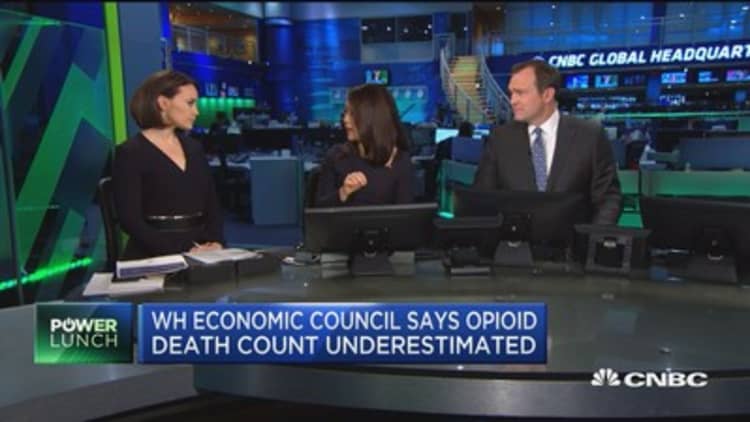The death rate for people hospitalized for opioid-related conditions more than quadrupled from the year 2000 even as the total number of such hospitalizations held steady, according to research published Monday.
During the same time period, there was no significant change in the rate of hospital deaths for people admitted in connection with other kinds of drugs besides opioids.
The same Health Affairs report found that patients admitted for poisoning from opioid or heroin from 2000 through 2014 were more likely to be white adults, age 50 to 64, Medicare beneficiaries with disabilities and people from low-income areas.
The research comes amid an ongoing epidemic of abuse of opioids, including prescription painkillers, heroin and synthetic opioids such as fentanyl.
"More than 64,000 drug overdose deaths were estimated to have occurred in 2016," noted Dr. Zirui Song, the Harvard Medical School assistant professor who wrote the Health Affairs report.
Song's analysis found that since 2000, the total volume of cases of hospitalizations related to opioids "remained relatively stable."

However, there was a shift in the nature of those hospitalizations — the rate of poisonings from opioids and heroin growing at the same pace as a decline in the rate of hospitalizations for opioid dependence or abuse.
That shift drove the spike in the death rate, as there are more fatalities from opioid poisonings than from cases of mere dependence, Song wrote.
In 2000, the death rate among people hospitalized for opioid-related conditions was 0.43 percent, or 4.3 deaths per 1,000 hospitalizations.
By 2014, the last year for which data were available, the death rate had increased to 2.02 percent, or 20.2 deaths per 1,000 hospitalizations, according to the Health Affairs report.
"In contrast, mortality rates among hospitalizations due to other drugs remained stable thoughout the study period, averaging .71 percent before and .75 percent after 2000," according to that report.
The dramatic increase in opioid-related deaths in hospitals occurred at the same time that the "mortality trend for all other hospitilizations in the United States steadily decreased," Song wrote.
In 1993, the death rate in hospitals due to non-opioid-related admissions was more than five times the rate for opoid-driven hospitalizations.
But by 2014, the non-opoid-related death rate in hospitals was "slightly below" the death rate linked to opioids, the report found.
"Whites accounts for the largest and fastest-growing share of hospitalizations in recent years" related to opioid-related poisonings, the article said.
And when Song looked at income, he found that patients in the lowest income quartile accounted for the biggest and fastest-growing share of hospitalizations for opioid poisonings.
People who had health coverage through Medicaid, the government program for primarily the poor, were more likely to be admitted to the hospital for opioid-related conditions overall.
However, during the time period Song looked at, "people enrolled in Medicare, not those in Medicaid, accounted for the fastest-growing share" of opioid-related hospitalizations related specificially to poisonings.
Medicare, which is operated by the federal government, provides health coverage primarily to people age 65 and older, but also covers younger people with disabilities.
"Medicare beneficiaries went from the smallest proportion of [opioid-related] hospitalizations in the 1990s to the largest share by the mid-2000s," Song wrote.
He noted that nearly all Medicare beneficiaries under the age of 65 received Social Security Disability Insurance, "and over 40 percent of disabled beneficiaries use prescription opioids — with a growing proportion using opioids chronically."
WATCH: Can digital pills help dent the opioid epidemic?



